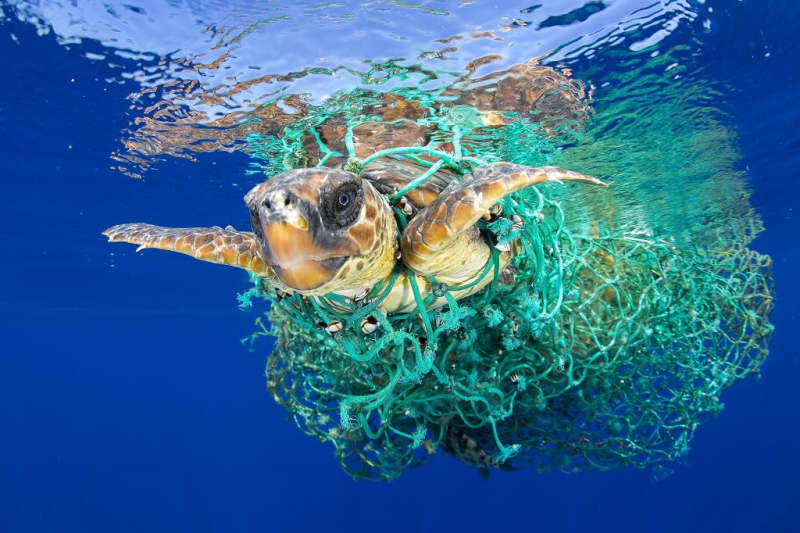
Every year, fishing equipment that ends up in the sea by accident or on purpose is the fate of hundreds of thousands of animals and substantially worsens the problem of plastic pollution.
Hundreds of thousands of kilometers of fishing line and thousands of four kilometers of nets have been or have been allowed to drift into the world’s seas this year. They continue to fish on their own regardless of what catches them.
An Australian study calculates that so much ghost line accumulates in the seas in a year that it would be enough for a good 18 laps around the globe.
According to it, the balance for the year looks like this:
Previous studies have found that a single fishing gear can be dangerous for decades. The risks are repeated, as the first victims often become scumbags. Other fish and many other sea animals also make the mistake of eating them and getting tangled up in the scum at the same time.
Cheap and durable polyethylene, nylon and other plastics revolutionized nets and fishing lines. At the same time, however, plastic has created a big ghost fishing problem.
In the past, ordinary natural fiber nets returned to the sea after becoming a part of nature’s cycle relatively quickly, but today’s equipment lasts in the sea and continues to catch prey indiscriminately while drifting.
That makes them a particularly serious form of marine plastic pollution.
A single ghost net is estimated to kill an average of half a million invertebrates, 1,700 fish and four seabirds.
Dolphins, seals and even whales also get caught in ghost nets with fatal consequences.
Every year, more than 650,000 marine mammals die or are seriously injured due to ghost fishing, estimates the environmental organization NRDC.
When drifting very long distances, the fishing gear also damages coral reefs and other sensitive habitats and spreads alien species to new areas.
The problems are not over when the sea has finally crushed the fishing gear. It is microplastic and can end up in the food chain, ultimately also in humans.
An estimated tenth of the micro and other plastic in the seas is fishing gear or decaying waste from it.

Interviews with fishermen were conducted in seven countries around the world: Belize, Indonesia, Iceland, Morocco, Peru, New Zealand and the United States.
The researchers’ data also included statistical data on commercial fishing.
According to the study, almost two percent of fishing equipment is lost or abandoned in the sea every year. The worst number is with bottom trawls. About four percent of them leave or are thrown away.
The interviews showed that small vessels lose the most equipment in proportion.
The good news is that the numbers are lower than in a meta-analysis published three years ago, which was based on 68 studies from 1975 to 2017. In the analysis, it was estimated that, on average, almost six percent of nets, more than eight percent of seines and no less than 29 percent of fishing lines end up adrift.

However, more information is needed to reach the goals of marking fishing gear, tracking and retrieving escapees from the sea, says Richardson.
The researchers also recommend better practices than the current ones for the responsible disposal of gear, such as buy-back programs for nets that have reached the end of their useful life and special waste stations in fishing ports.
More detailed weather forecasts would also improve the situation, as the ship’s encountering strong winds proved to be a major reason for the loss of fishing equipment in the interviews.
Researchers are looking for solutions. If the problems are allowed to continue as they are now, according to them, in 65 years, there will be so many ghost nets in Meri that if they were spread out evenly, the whole Earth would fit under them.
The numbers of studies and forecasts do not even include equipment lost or abandoned by recreational fishermen.
